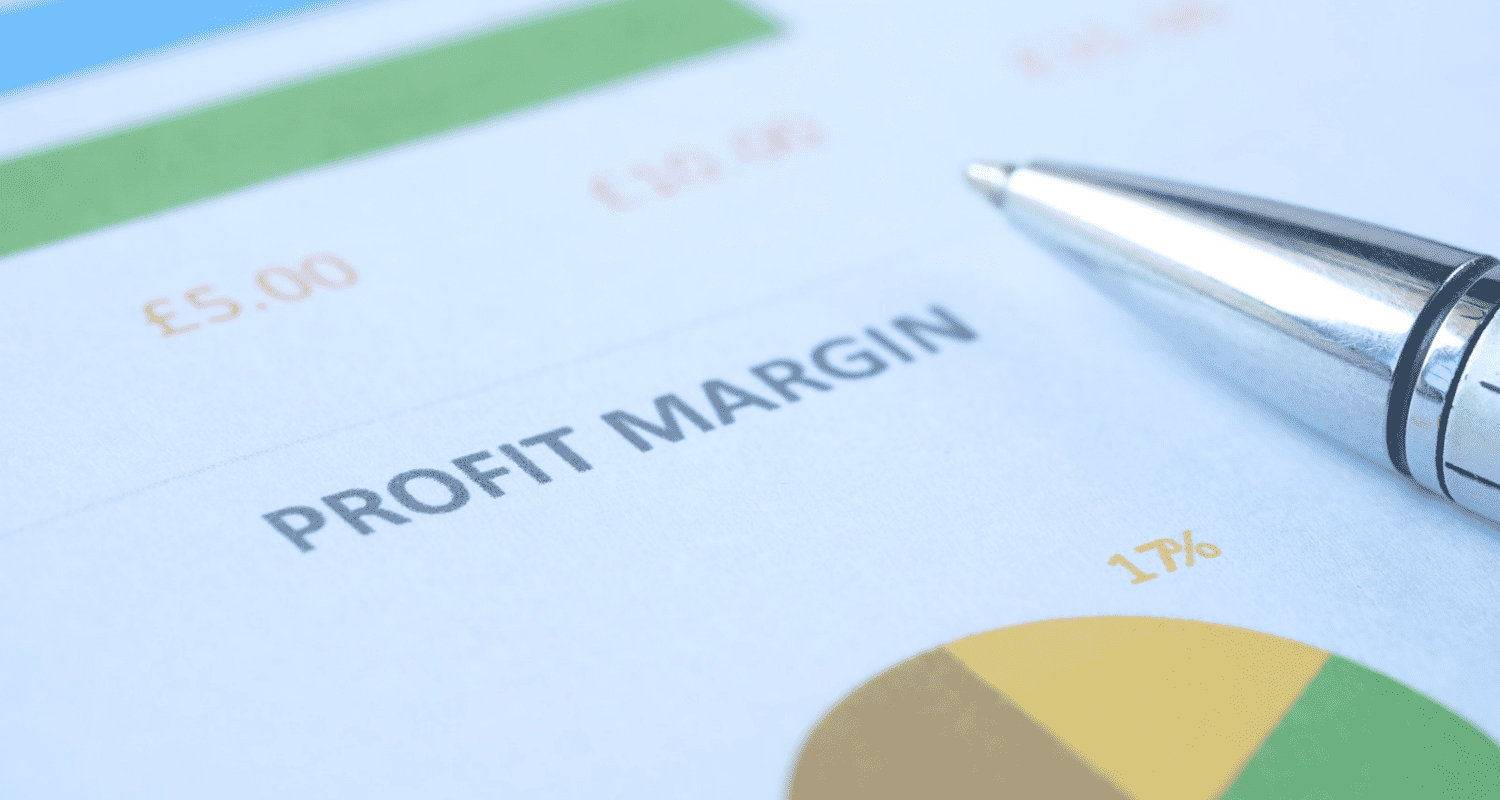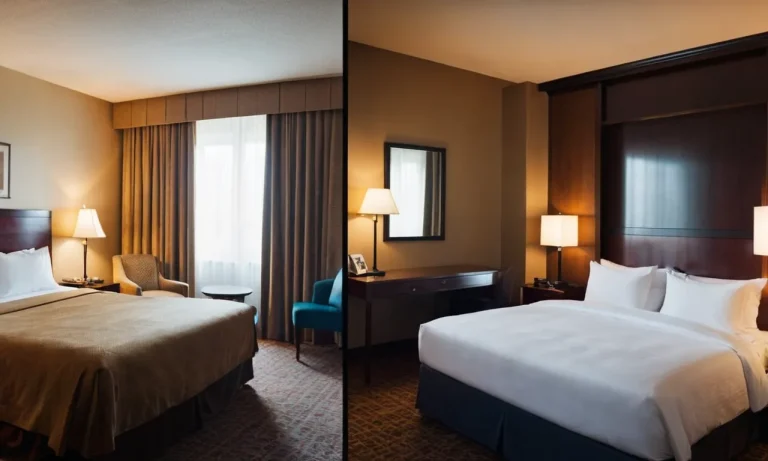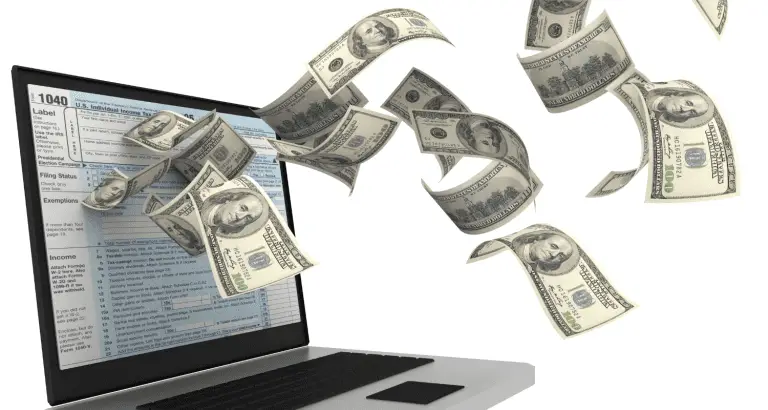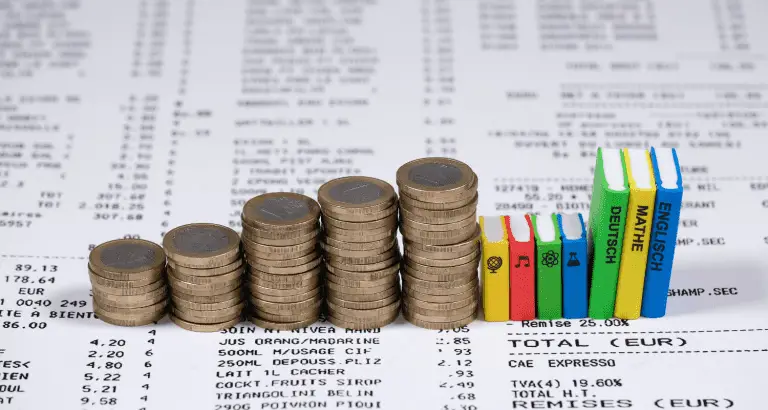Understanding Hotel Profit Margins: A Comprehensive Guide
In the ever-competitive hospitality industry, understanding hotel profit margins is crucial for success. Whether you’re an investor, a hotel owner, or simply curious about the inner workings of this dynamic sector, grasping the intricacies of profit margins can provide valuable insights.
If you’re short on time, here’s a quick answer to your question: Hotel profit margins typically range from 15% to 35%, with luxury hotels often achieving higher margins due to their premium pricing and amenities.
However, profit margins can vary significantly based on factors such as location, seasonality, operating costs, and occupancy rates.
In this comprehensive article, we’ll delve into the nuances of hotel profit margins, exploring the key components that influence profitability, industry benchmarks, and strategies for maximizing returns.
From revenue management to cost optimization, we’ll cover a wide range of topics to provide you with a holistic understanding of this critical aspect of the hospitality business.
Understanding Hotel Revenue Streams
Hotels rely on multiple revenue streams to drive profitability and maintain healthy profit margins. Understanding these streams is crucial for effective hotel management and strategic decision-making. Let’s dive into the key sources of hotel revenue:
Room Revenue
The bread and butter of the hotel industry, room revenue is generated through the sale of guestrooms. This accounts for the largest portion of a hotel’s revenue, typically ranging from 60% to 80% according to Statista.
Room rates are influenced by various factors, including location, amenities, seasonality, and occupancy levels. Effective yield management strategies, such as dynamic pricing and overbooking controls, are crucial for maximizing room revenue.
Food and Beverage Revenue
Hotels often offer a range of food and beverage services, including restaurants, bars, room service, and catering for events. This revenue stream can contribute significantly to a hotel’s bottom line, ranging from 20% to 30% of total revenue according to Hotel News Resource.
Successful food and beverage operations require careful menu planning, cost control, and exceptional service to attract both hotel guests and local patrons.
Did you know? According to the American Hotel & Lodging Association (AHLA), the average food and beverage revenue per occupied room in the U.S. was $44.07 in 2019. 😲
Ancillary Revenue
Ancillary revenue encompasses a wide range of services and amenities offered by hotels, such as spa treatments, parking fees, internet access, laundry services, and retail sales. While these revenue streams may seem small individually, they can collectively contribute a significant portion to a hotel’s profitability.
Innovative hotels are constantly exploring new ways to generate ancillary revenue, such as partnering with local attractions or offering unique experiences to guests.
Seasonality and Occupancy Rates
The hotel industry is highly seasonal, with occupancy rates and revenue fluctuating throughout the year. Peak seasons, such as summer vacations or major events, can drive high occupancy rates and allow hotels to command premium room rates.
On the other hand, low seasons may require hotels to offer discounted rates or promotional packages to maintain a steady flow of guests. Effective revenue management strategies, such as dynamic pricing and targeted marketing campaigns, can help hotels navigate these seasonal fluctuations and optimize their revenue streams.
Understanding and effectively managing these revenue streams is crucial for hotels to maintain healthy profit margins and stay competitive in the ever-evolving hospitality industry. By leveraging data-driven insights, implementing strategic pricing strategies, and continuously enhancing guest experiences, hotels can maximize their revenue potential and ensure long-term profitability.
Hotel Operating Costs
Maintaining a profitable hotel business requires a keen understanding of operating costs. These expenses can significantly impact the bottom line and determine the overall success of the establishment.
Operating costs encompass a wide range of expenses, from labor to utilities, marketing, and maintenance. By effectively managing these costs, hoteliers can optimize their profit margins and ensure long-term sustainability.
Labor Costs
Labor costs are typically the most significant expense for hotels, accounting for a substantial portion of their overall operating budget. These costs include salaries, wages, benefits, and training expenses for all employees, from front desk staff to housekeeping, maintenance, and management.
According to a study by CoStar, labor costs can account for up to 40% of a hotel’s total operating expenses.
Utilities and Maintenance
Keeping a hotel running smoothly requires significant investments in utilities and maintenance. Electricity, water, gas, and other utilities are essential for providing guests with a comfortable stay. Additionally, regular maintenance and repairs are crucial to ensure the longevity and functionality of the hotel’s facilities and equipment.
According to Hotel News Resource, utilities and maintenance costs can range from 10% to 15% of a hotel’s total operating expenses.
Marketing and Distribution Expenses
In today’s competitive hospitality industry, effective marketing and distribution strategies are vital for attracting guests and generating revenue. Hotels invest in various marketing channels, including online travel agencies (OTAs), social media advertising, search engine optimization (SEO), and traditional advertising methods.
Additionally, they pay commissions to travel agents and third-party booking platforms. According to AHT Insight, marketing and distribution expenses can account for up to 20% of a hotel’s total revenue.
Fixed and Variable Costs
Operating costs can be categorized as fixed or variable. Fixed costs, such as property taxes, insurance, and management fees, remain relatively constant regardless of occupancy levels. Variable costs, on the other hand, fluctuate based on the hotel’s occupancy and guest volume.
These include expenses like laundry, guest supplies, and certain labor costs. Striking a balance between fixed and variable costs is crucial for optimizing profitability and adapting to fluctuations in demand.
By understanding and effectively managing these various operating costs, hoteliers can maximize their profit margins and ensure the long-term success of their businesses. Implementing cost-saving strategies, leveraging technology, and continuously monitoring expenses are key to maintaining a competitive edge in the dynamic hospitality industry.
With careful planning and execution, hotels can achieve a healthy balance between operational efficiency and exceptional guest experiences.
Calculating Hotel Profit Margins
Comprehending hotel profit margins is a crucial aspect of managing a successful hospitality business. It not only provides insights into the financial health of the establishment but also aids in making informed decisions regarding operational strategies and future investments.
The calculation of profit margins involves several key metrics, including Gross Operating Profit (GOP), Net Operating Income (NOI), and industry benchmarks and averages.
Gross Operating Profit (GOP)
Gross Operating Profit (GOP) is a fundamental metric that measures the profitability of a hotel’s operations. It is calculated by subtracting operating expenses from total revenue. Operating expenses typically include costs associated with housekeeping, maintenance, utilities, and staff salaries.
A higher GOP indicates a more efficient operation and better cost management. According to Hotel News Resource, the average GOP for hotels in the United States was around 35% in 2022, showcasing the potential for profitability in the industry.
Net Operating Income (NOI)
While GOP provides insights into operational profitability, Net Operating Income (NOI) takes into account additional expenses, such as property taxes, insurance, and management fees. NOI is calculated by deducting these expenses from the GOP.
A higher NOI signifies a more profitable hotel business. According to HospitalityNet, the average NOI for hotels in the United States ranged between 25% and 35% in recent years, depending on the market segment and location.
Industry Benchmarks and Averages
To gain a comprehensive understanding of a hotel’s performance, it is essential to compare its profit margins with industry benchmarks and averages. These benchmarks can vary based on factors such as:
- Hotel category (luxury, midscale, economy)
- Location (urban, suburban, resort)
- Brand affiliation
- Market segment (business, leisure, group)
For example, according to STR, the average GOP margin for luxury hotels in the United States was around 40% in 2022, while for economy hotels, it was approximately 30%. 😊 By comparing a hotel’s profit margins with relevant industry benchmarks, owners and managers can identify areas for improvement and make strategic decisions to enhance profitability.
| Hotel Category | Average GOP Margin (2022) |
|---|---|
| Luxury | 40% |
| Upscale | 38% |
| Midscale | 35% |
| Economy | 30% |
Calculating and analyzing hotel profit margins is an essential aspect of running a successful hospitality business. By understanding metrics like GOP, NOI, and industry benchmarks, hotel owners and managers can make informed decisions, optimize operations, and ultimately increase profitability.
👏 Leveraging authoritative resources and staying up-to-date with industry trends is key to maintaining a competitive edge in the ever-evolving hospitality landscape.
Factors Influencing Hotel Profit Margins
Location and Market Dynamics
The location of a hotel plays a pivotal role in determining its profitability. Hotels situated in prime areas with high demand, such as bustling cities, tourist destinations, or business hubs, typically command higher room rates and enjoy higher occupancy levels.
According to a study by Hotel News Resource, hotels in major metropolitan areas can achieve an average daily rate (ADR) that is up to 30% higher than those in suburban or rural areas. This translates into significantly higher revenue potential and, ultimately, better profit margins.
Market dynamics, including seasonality, economic conditions, and competition, also influence hotel profit margins. During peak seasons or major events, hotels can capitalize on increased demand by raising room rates and implementing dynamic pricing strategies.
Conversely, economic downturns or oversupply in a market can lead to lower occupancy rates and reduced revenue, impacting profitability. According to Statista, the average U.S. hotel occupancy rate in 2022 ranged from a high of 69.9% in July to a low of 51.2% in January, highlighting the impact of seasonality.
Brand Reputation and Positioning
A hotel’s brand reputation and positioning in the market significantly affect its ability to command higher room rates and achieve better profit margins. Well-established, luxury brands with a strong reputation for quality and service can charge premium rates, attracting affluent travelers willing to pay for the associated amenities and experiences.
On the other hand, budget or mid-range hotels cater to more price-conscious consumers, leading to lower room rates but potentially higher occupancy levels.
According to a report by PwC, luxury hotels in the U.S. achieved an average daily rate of $395 in 2021, compared to $137 for economy hotels. However, economy hotels often compensate for lower room rates with higher occupancy rates, allowing them to maintain respectable profit margins through volume.
Property Age and Condition
The age and condition of a hotel property can significantly impact its operating costs and, consequently, its profit margins. Older properties may require more frequent renovations, maintenance, and repairs, increasing overall expenses.
Additionally, outdated facilities and amenities can hinder a hotel’s ability to command competitive room rates, further impacting profitability.
Conversely, newer or recently renovated hotels often benefit from lower maintenance costs and can capitalize on their modern amenities and facilities to command higher room rates. According to a study by HVS, a leading hospitality consulting firm, hotels that undergo regular renovations and upgrades can achieve up to a 15% premium in room rates compared to their non-renovated counterparts.
Management Efficiency
Effective management and operational efficiency are crucial in maximizing hotel profit margins. Well-managed properties can optimize staffing levels, control costs, and implement revenue management strategies to maximize profitability.
Efficient operations, such as energy-saving initiatives, streamlined processes, and effective inventory management, can significantly reduce overhead expenses and improve the bottom line.
According to a study by Deloitte Digital, hotels that leverage data analytics and advanced revenue management systems can increase their RevPAR (Revenue Per Available Room) by up to 10%, directly impacting their profit margins.
Additionally, effective cost control measures, such as implementing energy-efficient technologies and optimizing labor costs, can result in significant cost savings and higher profitability.
By understanding and addressing these key factors, hotel owners and operators can make informed decisions to enhance their profit margins and achieve long-term success in the competitive hospitality industry.
Strategies for Maximizing Hotel Profitability
In today’s competitive hospitality industry, maximizing profitability is a top priority for hotel owners and operators. By implementing effective strategies and leveraging the latest technologies, hotels can unlock new revenue streams, optimize costs, and enhance operational efficiency, ultimately driving higher profit margins.
Here are some key strategies to consider:
Revenue Management Strategies
- Dynamic Pricing: Implementing dynamic pricing models that adjust room rates based on demand, seasonality, and market conditions can help hotels maximize revenue per available room (RevPAR). According to a study by Revenue Analytics, hotels that effectively use dynamic pricing can increase RevPAR by up to 15%.
- Channel Management: Optimizing distribution channels, such as online travel agencies (OTAs), direct bookings, and corporate accounts, can help hotels capture more bookings and reduce commission fees. Industry reports from Hotel News Resource suggest that direct bookings can increase net revenue by up to 20%.
- Ancillary Revenue: Offering additional services and amenities, such as spa treatments, restaurant reservations, and event spaces, can create new revenue streams and increase guest spending. According to a study by Hospitality Net, ancillary revenue can contribute up to 30% of a hotel’s total revenue.
Cost Optimization Techniques
- Energy Efficiency: Implementing energy-saving measures, such as LED lighting, smart thermostats, and energy-efficient appliances, can significantly reduce utility costs. According to the EPA’s ENERGY STAR program, hotels can save up to 30% on energy costs through energy-efficient practices.
- Supply Chain Management: Negotiating better deals with suppliers, optimizing inventory levels, and implementing centralized purchasing can help hotels reduce operational costs. A study by McKinsey & Company found that effective supply chain management can lead to cost savings of up to 10% for hotels.
- Labor Optimization: Implementing workforce management tools, cross-training staff, and automating certain tasks can help hotels optimize labor costs while maintaining high service levels. According to Hospitality Net, labor costs can account for up to 50% of a hotel’s total operating expenses.
Operational Efficiency and Technology
Embracing technology and streamlining operations can significantly improve efficiency and reduce costs. Hotels can leverage tools such as property management systems (PMS), revenue management software, and automation technologies to optimize processes, enhance decision-making, and improve guest experiences.
According to a report by McKinsey & Company, hotels that effectively leverage technology can increase operational efficiency by up to 25%.
Guest Experience and Loyalty Programs
Delivering exceptional guest experiences and fostering loyalty are crucial for driving repeat business and positive word-of-mouth recommendations. Hotels can implement loyalty programs that reward frequent guests with perks, discounts, and personalized experiences.
According to a study by Forrester Research, hotels with strong loyalty programs can increase customer retention by up to 30% and generate up to 40% of their revenue from loyal guests.
By implementing these strategies and embracing innovation, hotels can unlock new opportunities for growth, optimize costs, and enhance operational efficiency, ultimately maximizing profitability and staying ahead in the competitive hospitality landscape.
Continuous adaptation, data-driven decision-making, and a commitment to delivering exceptional guest experiences are key to long-term success and profitability in the hotel industry.
Conclusion
Navigating the complexities of hotel profit margins is a multifaceted endeavor that requires a deep understanding of revenue streams, operating costs, and industry dynamics. By mastering the concepts outlined in this comprehensive guide, you’ll be well-equipped to analyze and optimize profitability in the hospitality sector.
Remember, profit margins are not static; they are influenced by a myriad of factors, from location and seasonality to operational efficiency and guest experience. Successful hotel operators continuously adapt their strategies, leveraging data-driven insights and industry best practices to stay ahead of the curve.
Whether you’re a seasoned hotelier or an aspiring entrepreneur, grasping the intricacies of hotel profit margins is a critical step towards achieving long-term success in this dynamic and ever-evolving industry.
Embrace the knowledge shared in this article, and embark on a journey towards maximizing profitability while delivering exceptional guest experiences.







